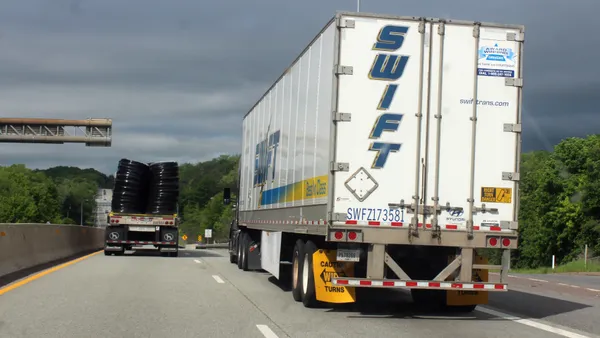Dive Brief:
- U.S. Xpress Enterprises labor costs skyrocketed by 25.5% YoY in Q2, according to a press release.
- In Q2, the carrier spent $181.4 million in salaries, wages and benefits, up from $144.5 million in Q2 2021. Labor costs for U.S. Xpress have been consistently rising, increasing 4.8% in 2020 and 11.4% in 2021, according to an annual report.
- “We are focused on what we can control to drive continued sequential improvement in our financial results, namely continued overall fleet growth, which is benefiting from the softer market as more drivers are shifting back to the larger carriers,” President and CEO Eric Fuller said on the company’s Aug. 3 earnings call.
Dive Insight:
U.S. Xpress has been dealing with worse-than-industry turnover, according to its annual report. In the report, from March 1, the company projected a driver market to remain tight and expected driver wages to continue to increase.
One solution working to address turnover has been its Variant brand, launched in 2019 with artificial intelligence to help carry out its operations. But the 1,889-truck fleet still notched a 150% turnover year to date, according to a Q2 earnings report.
The trucking industry at large is facing issues with driver retention. To help with retention, firms increased pay by 11% in 2021. Last year, sign-on and referral bonuses also increased in large swaths, an American Trucking Associations survey reported last week.
In addition to providing higher pay, companies such as Marten Transport have touted work-life balance in helping expand its labor pool, and ArcBest-owned ABF Freight hit hiring targets through in-person hiring events.
In a related revamp, U.S. Xpress recently reorganized Variant in an effort to improve fleet utilization, Fuller said on the Aug. 3 earnings call, suggesting that the move may have contributed to the turnover.
Despite headwinds, U.S. Xpress still views Variant as a key to its future.
“We continue to believe that Variant is the growth engine for our company because of the large market for one way freight movement, and that we can implement technology to improve capacity, cost and service levels for our customers while at the same time improving the experience for our professional drivers,” Fuller said.












